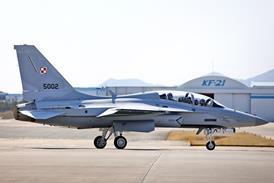Israel Aerospace Industries is building and integrating nanosatellites for scientific applications.
Such nanosatellites typically weigh less than 10kg (22lb) and are commonly used to demonstrate new technologies and execute short space missions, of typically up to two years.
In addition to the innovative and technological achievements involved in the development of nanosatellites, the main reason for their existence is to minimise the risk of large space missions and save expense.
Nanosatellites use commercial off-the-shelf components to bring about a significant reduction in the cost and duration of satellite development, typically about 1% of the cost and less than half the time of that required for large satellites.
The InKlajn-1 nanosatellite owned by the Israeli Nano-Satellites Association is currently in its integration phase. It contains seven scientific and commercial experiments, through which the behaviour of terrestrial components is to be tested in space.
For this project, teams of engineers and technicians are using experience gained while working on IAI's range of observation and communication satellites.
The integration of additional nanosatellites is being examined at IAI.
- All the latest news, images and video from the 2011 Paris air show
Source: Flight Daily News




















